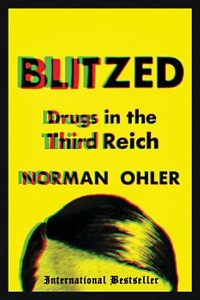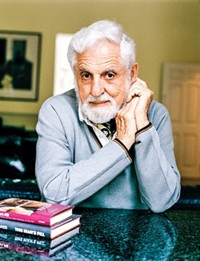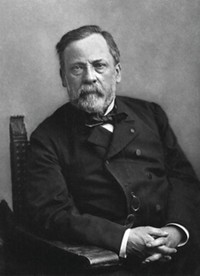Advertisement
Grab your lab coat. Let's get started
Welcome!
Welcome!
Create an account below to get 6 C&EN articles per month, receive newsletters and more - all free.
It seems this is your first time logging in online. Please enter the following information to continue.
As an ACS member you automatically get access to this site. All we need is few more details to create your reading experience.
Not you? Sign in with a different account.
Not you? Sign in with a different account.
ERROR 1
ERROR 1
ERROR 2
ERROR 2
ERROR 2
ERROR 2
ERROR 2
Password and Confirm password must match.
If you have an ACS member number, please enter it here so we can link this account to your membership. (optional)
ERROR 2
ACS values your privacy. By submitting your information, you are gaining access to C&EN and subscribing to our weekly newsletter. We use the information you provide to make your reading experience better, and we will never sell your data to third party members.
Biological Chemistry
Trip Of A Century
Albert Hofmann, inventor of the mind-altering drug LSD, celebrates his 100th birthday
by Ivan Amato
February 27, 2006
| A version of this story appeared in
Volume 84, Issue 9
Late last month, the University of Zurich hosted a symposium in celebration of the 100th birthday of one of its most illustrious alumni, Albert Hofmann. More than 60 years ago, on a spring day while World War II raged in Europe and the Pacific, Hofmann synthesized perhaps the most mind-bending chemical of all time: the psychomimetic agent LSD, formally known as D-lysergic acid diethylamide. Hofmann got some of his first inklings of the drug's powers while riding his bike home from his laboratory at the pharmaceutical giant Sandoz in Basel, Switzerland.
Hofmann, born on Jan. 11, 1906, first synthesized LSD in 1938 as part of a systematic investigation of dozens of derivatives of alkaloids made by ergot, a poisonous fungus that infects grains and grasses. Other ergot alkaloid derivatives from Hofmann's research program had shown strong effects on blood pressure and vasodilation, and these led to clinically effective medicines for treating migraines and postchildbirth bleeding in mothers. Initial tests of lysergic acid diethylamide, then designated as LSD-25, showed nothing of pharmacological interest, so the compound was shelved.
Not for good, as it turns out. Five years later, Hofmann, still fascinated by LSD-25's chemical structure, decided to revisit the compound. On April 16, 1943, while synthesizing a batch no larger than a few hundredths of a gram, he unintentionally experienced humanity's first LSD trip.
"I was seized by a peculiar sensation of vertigo and restlessness," he later wrote in a memoir titled "LSD-My Problem Child." "Objects as well as the shape of my associates in the laboratory appeared to undergo optical changes," he recounted. "With my eyes closed, fantastic pictures of extraordinary plasticity and intensive colour seemed to surge towards me. After two hours, this state gradually subsided, and I was able to eat dinner with a good appetite."

To follow up his suspicion that this fantastic cognitive experience was caused by accidental ingestion of the LSD-25 he had made, a few days later Hofmann deliberately took 150 mcg of the substance. It was a minuscule amount that he assumed would have only subtle but sufficient effects to confirm his hypothesis.
What followed was the world's first bad LSD trip, an all-day psychopharmacological ordeal that included frightening hallucinations, physical symptoms such as numb limbs, a metallic taste on the tongue, feelings of suffocation, and out-of-body sensations. "I lost all control of time," he recalls in his memoir. "Space and time became more and more disorganized, and I was overcome with fears that I was going crazy."
The following day, however, the foreboding had given way to intense feelings of well-being, as well as sensory vibrancy. "Everything glistened and sparkled in a fresh light," he recalled, highlighting the drug's ability to elicit in many users joyful feelings and mystical experiences of oneness with the world.
Over the next 20 years or so, psychologists, psychiatrists, and other researchers investigated LSD's effects and potential therapeutic value for a wide range of disorders, among them schizophrenia, depression, and alcoholism, according to the Gaia Media Foundation, which organized another celebration of Hofmann's centennial birthday. Dubbed "LSD: Problem Child and Wonder Drug," this three-day mid-January event in Basel emphasized the cultural, spiritual, societal, and philosophical consequences that accompanied the ascent of LSD in the 1960s and 1970s as the iconic chemical behind the "psychedelic" movement. That movement was popularized by then-Harvard University psychologist Timothy Leary, whose most famous drug-infused adage of the era was "Turn on, tune in, drop out."
The drug's profound influence on the perception of reality, sensory experience, and spiritual sensibilities spawned unique genres of music, art, literature, and spiritual practice. The drug also ended up with a bad reputation due to well-publicized-if not always well-documented-cases of LSD-induced suicides, bad trips, and, in the words of an American Medical Association report, "personality deterioration."
The compound was listed in the early 1970s by the U.S. government as a "Schedule 1" drug, classifying it like heroin as a dangerous drug with high potential for abuse and no recognized medical value. Except for a handful of tenacious researchers who have successfully petitioned for permission to use LSD for specific research projects, this designation has effectively rendered illegal almost all use and investigation of the drug.
When asked by C&EN to look back at what his 1943 discovery of LSD's effects had wrought, Hofmann offered a number of fascinating and amusing reflections. "I was amazed that a psychomimetic agent, which in no way can be considered a simple euphoric, found a place in the popular drug scene," he says, referring to the way the intensity and strangeness of an LSD trip all but precludes it from being entirely enjoyable. Most thrilling, he says, was the recognition by famous poets and writers, among them Aldous Huxley and Ernst Jünger, of the profound implications of LSD's pharmacologic activity on the nature of the brain, mind, and cognition. This recognition, however, was most painfully tempered for Hofmann by governmental decisions to completely ban the use of LSD rather than responsibly regulate it.
One of the more comical, albeit fortuitous, details of the ongoing history of his LSD work, he says, is that "when one looks for my book 'LSD-My Problem Child' in the U.S., one is occasionally referred to bookstores that specialize in children's psychology."
Lively and gregarious at 100, Hofmann earned his Ph.D. in 1929 under the tutelage of chemistry Nobel Laureate Paul Karrer at the University of Zurich. His thesis was on the structure of chitin, an important biopolymer found in crustacean shells, insects, and fungi. Using an enzyme from the stomachs of snails that he collected himself, he degraded lobster chitin and deduced its monomer structure to be glucosamine.
Hofmann's own LSD-taking days essentially ended decades ago. But he tells C&EN that he last took a small dose three years ago, "to examine whether this compound could be used as an antidepressant." His self-experimentation, which perpetuated a common practice among LSD researchers, produced but a single new data point, for him one with a happy ending. The LSD lifted him up from a depressive state, he reports.
As evidenced from a broad smile that frequently alighted on Hofmann's remarkably well-preserved, century-old, and often photographed face at both the Basel and Zurich celebrations, the broad recognition that he received last month for his birthday and his greatest discovery also clearly had an uplifting effect.






Join the conversation
Contact the reporter
Submit a Letter to the Editor for publication
Engage with us on Twitter